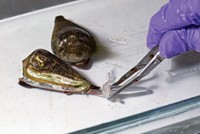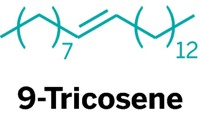Advertisement
Grab your lab coat. Let's get started
Welcome!
Welcome!
Create an account below to get 6 C&EN articles per month, receive newsletters and more - all free.
It seems this is your first time logging in online. Please enter the following information to continue.
As an ACS member you automatically get access to this site. All we need is few more details to create your reading experience.
Not you? Sign in with a different account.
Not you? Sign in with a different account.
ERROR 1
ERROR 1
ERROR 2
ERROR 2
ERROR 2
ERROR 2
ERROR 2
Password and Confirm password must match.
If you have an ACS member number, please enter it here so we can link this account to your membership. (optional)
ERROR 2
ACS values your privacy. By submitting your information, you are gaining access to C&EN and subscribing to our weekly newsletter. We use the information you provide to make your reading experience better, and we will never sell your data to third party members.
Environment
Odors Inhibit Fly CO2 Response
Chemicals that modulate the insects' response to carbon dioxide could lead to new insect repellents
by Celia Henry Arnaud
August 31, 2009
| A version of this story appeared in
Volume 87, Issue 35

Chemicals that modulate the response to carbon dioxide in fruit flies and mosquitoes could lead to new insect repellents. Fruit flies normally try to avoid CO2 because it’s a major component of the cocktail of volatile compounds emitted by stressed flies. However, CO2 is also emitted by many of the flies’ food sources, such as overripe fruit, yeast, and beer. Stephanie Lynn Turner and Anandasankar Ray of the University of California, Riverside, find that compounds emitted by these food sources, such as 1-hexanol and 2,3-butanedione, inhibit the response of some neurons to CO2, thus shutting down the flies’ CO2-avoidance behavior (Nature, DOI: 10.1038/nature08295). Culex quinquefasciatus mosquitoes, which transmit pathogens such as filarial parasites and West Nile virus, have some of the same CO2 receptors as fruit flies. In the mosquitoes’ case, however, CO2 in human breath acts as an attractive cue that helps lead the insects to targets. The researchers found that the compounds 1-butanal and 1-hexanol inhibit the CO2 response in mosquitoes. Such findings “may provide a valuable resource for the identification of economical, environmentally safe volatile compounds that may reduce mosquito-human contact by blocking responsiveness to CO2,” the researchers write.





Join the conversation
Contact the reporter
Submit a Letter to the Editor for publication
Engage with us on Twitter